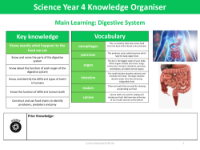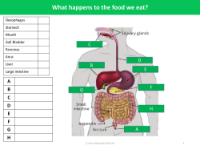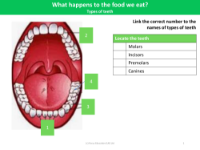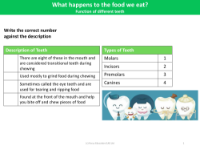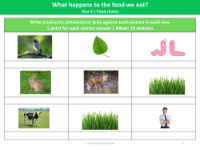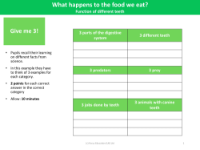Match up - Organs
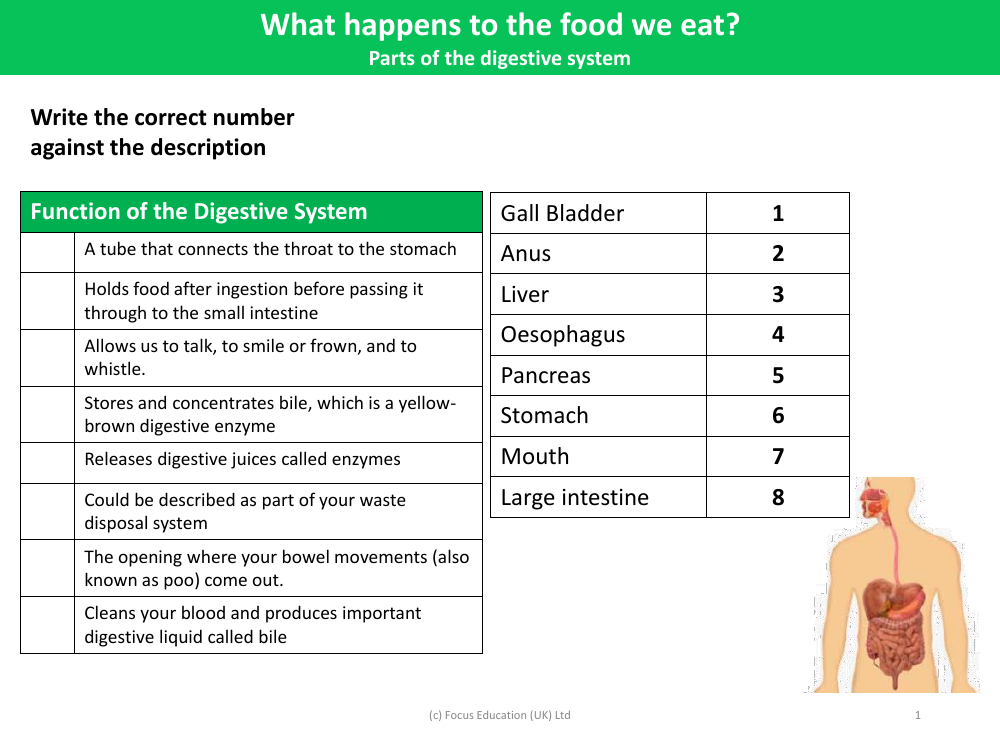
Science Resource Description
The digestive system is a complex network of organs working together to break down food, absorb nutrients, and expel waste. Each organ has a specific role to play in this intricate process. The oesophagus, marked as number 4, is a muscular tube that connects the throat to the stomach, allowing ingested food to be transported for further digestion. The stomach, number 6, is a sac-like organ that holds food after ingestion, mixing it with digestive juices before passing it through to the small intestine.
The mouth, which is not just for eating but also allows us to talk, smile, frown, and whistle, is represented by number 7. The gall bladder, number 1, is a small organ that stores and concentrates bile, a yellow-brown digestive enzyme produced by the liver. The pancreas, number 5, releases digestive enzymes that aid in the breakdown of food. The large intestine, number 8, plays a crucial role in the body's waste disposal system, absorbing water and preparing waste for expulsion. The anus, identified as number 2, is the opening through which bowel movements, also known as poo, are expelled from the body. Lastly, the liver, number 3, has multiple functions, including cleansing the blood and producing bile, an important digestive liquid.

